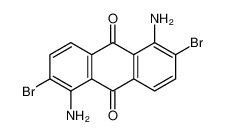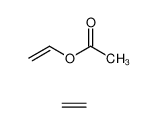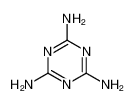| Product name | dibromine |
|---|
| Product number | - |
|---|---|
| Other names | Br2 |
| Identified uses | For industry use only. Adsorbents and absorbents,Dyes,Flame retardants,Intermediates |
|---|---|
| Uses advised against | no data available |
| Company | MOLBASE (Shanghai) Biotechnology Co., Ltd. |
|---|---|
| Address | Floor 4 & 5, Building 12, No. 1001 North Qinzhou Road, Xuhui District, Shanghai, China |
| Telephone | +86(21)64956998 |
| Fax | +86(21)54365166 |
| Emergency phone number | +86-400-6021-666 |
|---|---|
| Service hours | Monday to Friday, 9am-5pm (Standard time zone: UTC/GMT +8 hours). |
Skin corrosion, Category 1A
Acute toxicity - Inhalation, Category 2
Hazardous to the aquatic environment, short-term (Acute) - Category Acute 1
2.2 GHS label elements, including precautionary statements| Pictogram(s) | 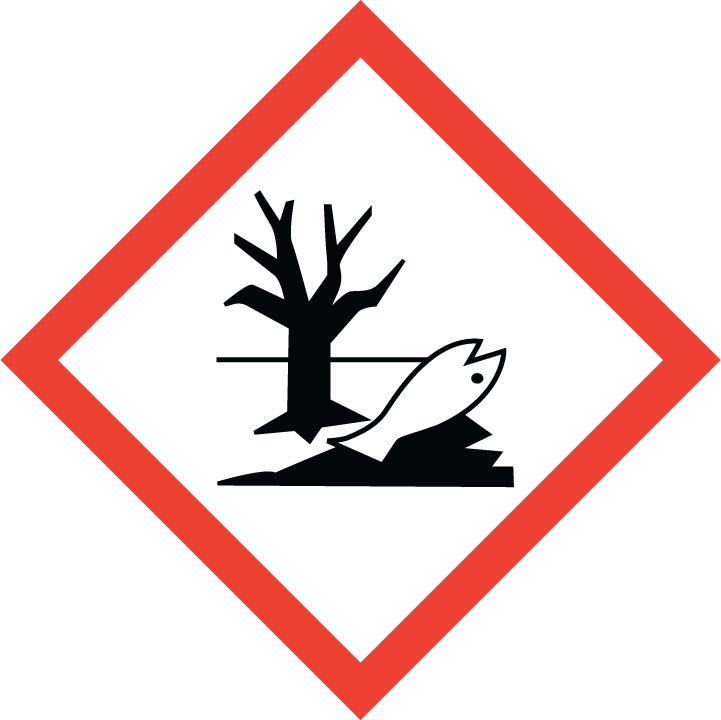 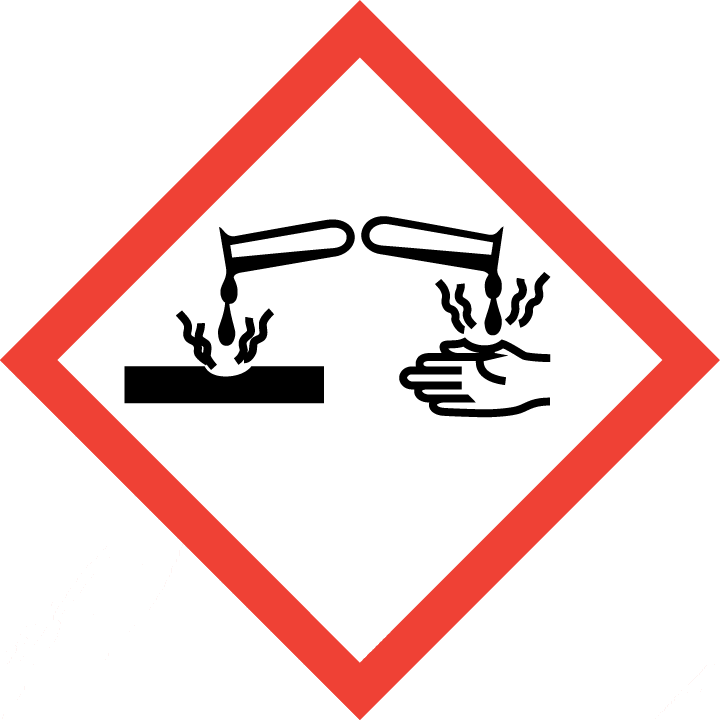 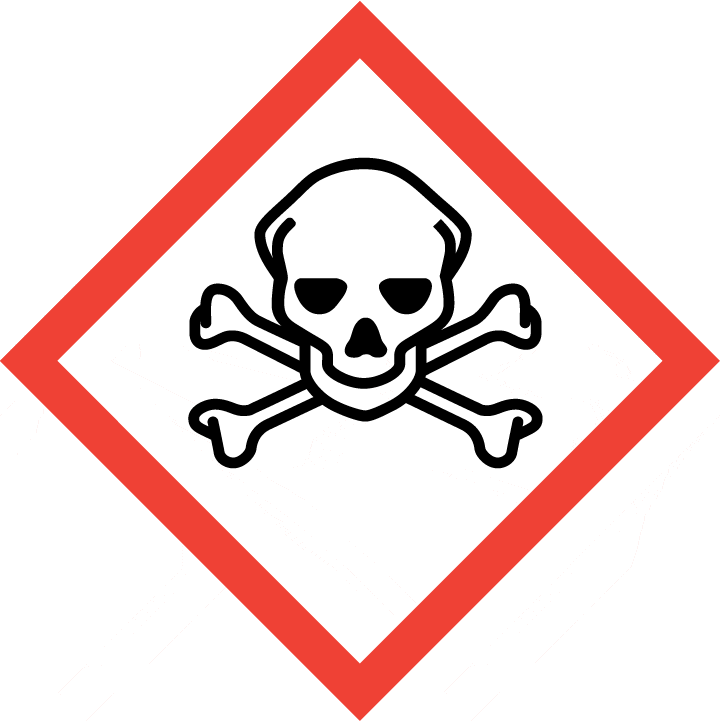 |
|---|---|
| Signal word | Danger |
| Hazard statement(s) | H314 Causes severe skin burns and eye damage H330 Fatal if inhaled H400 Very toxic to aquatic life |
| Precautionary statement(s) | |
| Prevention | P260 Do not breathe dust/fume/gas/mist/vapours/spray. P264 Wash ... thoroughly after handling. P280 Wear protective gloves/protective clothing/eye protection/face protection. P271 Use only outdoors or in a well-ventilated area. P284 [In case of inadequate ventilation] wear respiratory protection. P273 Avoid release to the environment. |
| Response | P301+P330+P331 IF SWALLOWED: Rinse mouth. Do NOT induce vomiting. P303+P361+P353 IF ON SKIN (or hair): Take off immediately all contaminated clothing. Rinse skin with water [or shower]. P363 Wash contaminated clothing before reuse. P304+P340 IF INHALED: Remove person to fresh air and keep comfortable for breathing. P310 Immediately call a POISON CENTER/doctor/… P321 Specific treatment (see ... on this label). P305+P351+P338 IF IN EYES: Rinse cautiously with water for several minutes. Remove contact lenses, if present and easy to do. Continue rinsing. P320 Specific treatment is urgent (see ... on this label). P391 Collect spillage. |
| Storage | P405 Store locked up. P403+P233 Store in a well-ventilated place. Keep container tightly closed. |
| Disposal | P501 Dispose of contents/container to ... |
none
3.Composition/information on ingredients 3.1 Substances| Chemical name | Common names and synonyms | CAS number | EC number | Concentration |
|---|---|---|---|---|
| dibromine | dibromine | 7726-95-6 | none | 100% |
Consult a physician. Show this safety data sheet to the doctor in attendance.
If inhaledFresh air, rest. Half-upright position. Artificial respiration may be needed. Refer immediately for medical attention. See Notes.
In case of skin contactFirst rinse with plenty of water for at least 15 minutes, then remove contaminated clothes and rinse again. Put clothes in sealable container. Refer immediately for medical attention.
In case of eye contactRinse with plenty of water for several minutes (remove contact lenses if easily possible). Refer immediately for medical attention.
If swallowedRinse mouth. Do NOT induce vomiting. Refer immediately for medical attention.
4.2 Most important symptoms/effects, acute and delayedInhalation exposure to 11-23 mg/m3 produces severe choking. 30-60 mg/m3 is extremely dangerous. 200 mg/m3 is fatal in a short time. Vapors can cause acute as well as chronic poisoning. It has cumulative properties. It is irritating to the eyes and respiratory tract. Poisoning is due to the corrosive action on the gastrointestinal tract. Nervous, circulatory and renal disturbances occur after ingestion. Ingestion of liquid can cause death due to circulatory collapse and asphyxiation from swelling of the respiratory tract. The lowest oral lethal dose reported for humans is 14 mg/kg. The lowest lethal inhalation concentration reported for humans is 1000 ppm. (EPA, 1998)
4.3 Indication of immediate medical attention and special treatment needed, if necessaryImmediate first aid: Ensure that adequate decontamination has been carried out. If patient is not breathing, start artificial respiration, preferably with a demand-valve resuscitator, bag-valve-mask device, or pocket mask, as trained. Perform CPR as necessary. Immediately flush contaminated eyes with gently flowing water. Do not induce vomiting. If vomiting occurs, lean patient forward or place on left side (head-down position, if possible) to maintain an open airway and prevent aspiration. Keep patient quiet and maintain normal body temperature. Obtain medical attention. /Bromine, methyl bromide, and related compounds/
5.Fire-fighting measures 5.1 Extinguishing media Suitable extinguishing mediaIf material involved in fire: Extinguish fire using agent suitable for type of surrounding fire. (Material itself does not burn or burns with difficulty). Use water in flooding quantities as fog. Cool all affected containers with flooding quantities of water. Apply water from as far a distance as possible. Use water spray to knock-down vapors.
5.2 Specific hazards arising from the chemicalWill cause ignition of organic materials spontaneous ignition possible when combined with potassium, phosphorus and tin and a wide variety of other chemicals. It reacts explosively with acetylene, acrylonitrile, ammonia, dimethyl formamide, ethyl phosphine, hydrogen, isobutyrophenone, nickel carbonyl, nitrogen triiodide, ozone, oxygen difluoride, phosphorus, potassium, silver azide, sodium and sodium carbide. When heated it emits highly toxic fumes and will react with water or steam to product toxic and corrosive fumes. Bromine is incompatible with a wide variety of materials including alkali hydroxides; arsenites; ferrous, mercurous salts; hypophosphites and other oxidizable substances. Vaporizes rapidly at room temperature. (EPA, 1998)
5.3 Special protective actions for fire-fightersWear self-contained breathing apparatus for firefighting if necessary.
6.Accidental release measures 6.1 Personal precautions, protective equipment and emergency proceduresUse personal protective equipment. Avoid dust formation. Avoid breathing vapours, mist or gas. Ensure adequate ventilation. Evacuate personnel to safe areas. Avoid breathing dust. For personal protection see section 8.
6.2 Environmental precautionsEvacuate danger area! Consult an expert! Personal protection: gas-tight chemical protection suit including self-contained breathing apparatus. Ventilation. Do NOT let this chemical enter the environment. Remove vapour with fine water spray. Collect leaking liquid in sealable containers. Absorb remaining liquid in dry sand or inert absorbent. Do NOT absorb in saw-dust or other combustible absorbents. Then store and dispose of according to local regulations.
6.3 Methods and materials for containment and cleaning up1) VENTILATE AREA OF SPILL OR LEAK. 2) COLLECT FOR RECLAMATION OR ABSORB IN VERMICULITE, DRY SAND, EARTH, OR A SIMILAR MATERIAL OR POUR SODIUM THIOSULFATE OR LIME WATER OVER SMALL SPILLS.
7.Handling and storage 7.1 Precautions for safe handlingAvoid contact with skin and eyes. Avoid formation of dust and aerosols. Avoid exposure - obtain special instructions before use.Provide appropriate exhaust ventilation at places where dust is formed. For precautions see section 2.2.
7.2 Conditions for safe storage, including any incompatibilitiesProvision to contain effluent from fire extinguishing. Separated from food and feedstuffs. See Chemical Dangers. Cool. Dry. Well closed. Keep in a well-ventilated room. Store only in original container. Store in an area without drain or sewer access.Conditions for safe storage, including any incompatibilities: Keep container tightly closed in a dry and well-ventilated place. Containers which are opened must be carefully resealed and kept upright to prevent leakage. Do not store in polyethylene containers. Handle and open container with care.
8.Exposure controls/personal protection 8.1 Control parameters Occupational Exposure limit valuesRecommended Exposure Limit: 10 hour Time-Weighted Average: 0.1 ppm (0.7 mg/cu m).
Recommended Exposure Limit: 15 minute Short-Term Exposure Limit: 0.3 ppm (2 mg/cu m).
Biological limit valuesno data available
8.2 Appropriate engineering controlsHandle in accordance with good industrial hygiene and safety practice. Wash hands before breaks and at the end of workday.
8.3 Individual protection measures, such as personal protective equipment (PPE) Eye/face protectionSafety glasses with side-shields conforming to EN166. Use equipment for eye protection tested and approved under appropriate government standards such as NIOSH (US) or EN 166(EU).
Skin protectionWear impervious clothing. The type of protective equipment must be selected according to the concentration and amount of the dangerous substance at the specific workplace. Handle with gloves. Gloves must be inspected prior to use. Use proper glove removal technique(without touching glove's outer surface) to avoid skin contact with this product. Dispose of contaminated gloves after use in accordance with applicable laws and good laboratory practices. Wash and dry hands. The selected protective gloves have to satisfy the specifications of EU Directive 89/686/EEC and the standard EN 374 derived from it.
Respiratory protectionWear dust mask when handling large quantities.
Thermal hazardsno data available
9.Physical and chemical properties| Physical state | dark red liquid or reddish-brown gas |
|---|---|
| Colour | Dark reddish-brown, volatile, mobile diatomic liquid; vaporizes at room temperature |
| Odour | Suffocating odor |
| Melting point/ freezing point | 145°C(dec.)(lit.) |
| Boiling point or initial boiling point and boiling range | 58.8°C(lit.) |
| Flammability | Noncombustible Liquid, but accelerates the burning of combustibles.Not combustible but enhances combustion of other substances. Many reactions may cause fire or explosion. Heating will cause rise in pressure with risk of bursting. Gives off irritating or toxic fumes (or gases) in a fire. |
| Lower and upper explosion limit / flammability limit | no data available |
| Flash point | 79°C(lit.) |
| Auto-ignition temperature | Not flammable (USCG, 1999) |
| Decomposition temperature | no data available |
| pH | no data available |
| Kinematic viscosity | 0.134 cSt at 20°C; 0.288 cSt at 30°C; 0.264 cSt at 40°C; 0.245 at 50°C |
| Solubility | In water:35 g/L (20 ºC) |
| Partition coefficient n-octanol/water (log value) | no data available |
| Vapour pressure | 175 mm Hg ( 20 °C) |
| Density and/or relative density | 3.119g/mLat 25°C(lit.) |
| Relative vapour density | 7.14 (vs air) |
| Particle characteristics | no data available |
no data available
10.2 Chemical stabilityStable under recommended storage conditions.
10.3 Possibility of hazardous reactionsThe vapour is heavier than air.BROMINE is a powerful oxidizing agent. Reacts vigorously with reducing reagents. Can ignite a combustible material upon contact. If heated by itself or if mixed with water or steam, highly toxic and corrosive fumes are emitted. Reacts explosively with hydrogen, diethylzinc, dimethylformamide, ammonia, trimethylamine, nitromethane, metal azides (silver or sodium azide). Mixtures with lithium or sodium are shock-sensitive. Ignites on contact with germanium, trialkyl boranes, copper and alkali metal acetylides [Sax, 9th ed., 1996, p. 506]. Attacks most metals, including platinum and palladium [Hawley]. May react violently to form bromides upon contact with Mg, Sr, B, Al, Hg, Ti, Sn, Sb in powder or sheet form. Sodium, potassium, antimony and germanium ignite in bromine vapor and react explosively. Ignites on contact with germanium, trialkyl boranes, copper and alkali metal acetylides [Sax, 9th ed., 1996, p. 506]. Violent reaction with methanol, ethanol, aldehydes, ketones, carboxylic acids, diethyl ether, carbonyl compounds, tetrahydrofuran, acrylonitrile, ozone, phosphorus. Methyl acetylides or carbides ignite at room temperature on contact with bromine vapor. Explosive reaction with red phosphorus, metal azides, nitromethane, silane and its homologues [Bretherick, 5th ed., 1995, p. 109]. Reacts violently on contact with natural rubber [Pascal, 1960, vol. 16.1, 371].
10.4 Conditions to avoidno data available
10.5 Incompatible materialsDuring bromination of acetone to bromoacetone, presence of a large excess of bromine must be avoided to prevent sudden and violent reaction.
10.6 Hazardous decomposition productsno data available
11.Toxicological information Acute toxicity- Oral: LD50 Mouse oral 3100 mg/kg bw
- Inhalation: LC50 Mouse inhalation 750 ppm (9 min)
- Dermal: no data available
no data available
Serious eye damage/irritationno data available
Respiratory or skin sensitizationno data available
Germ cell mutagenicityno data available
Carcinogenicityno data available
Reproductive toxicityno data available
STOT-single exposureno data available
STOT-repeated exposureno data available
Aspiration hazardno data available
12.Ecological information 12.1 Toxicity- Toxicity to fish: LC50; Species: Lepomis macrochirus (Bluegill); Conditions: freshwater, static; Concentration: 0.52 ppm for 24 hr (95% confidence interval: 0.38-0.83 ppm)
- Toxicity to daphnia and other aquatic invertebrates: LC50; Species: Daphnia magna (Water flea) age < or = 24 hr; Conditions: freshwater, static, 22°C, pH 8.0 (7.4-9.4), hardness 173 mg/L CaCO3, dissolved oxygen >60%; Concentration: 1500 ug/L for 24 hr (95% confidence interval: 1000-2200 ug/L)
- Toxicity to algae: no data available
- Toxicity to microorganisms: no data available
Bromine will slowly be reduced to bromide by natural oxidizable materials(1).
12.3 Bioaccumulative potentialno data available
12.4 Mobility in soilno data available
12.5 Other adverse effectsno data available
13.Disposal considerations 13.1 Disposal methods ProductThe material can be disposed of by removal to a licensed chemical destruction plant or by controlled incineration with flue gas scrubbing. Do not contaminate water, foodstuffs, feed or seed by storage or disposal. Do not discharge to sewer systems.
Contaminated packagingContainers can be triply rinsed (or equivalent) and offered for recycling or reconditioning. Alternatively, the packaging can be punctured to make it unusable for other purposes and then be disposed of in a sanitary landfill. Controlled incineration with flue gas scrubbing is possible for combustible packaging materials.
14.Transport information 14.1 UN Number| ADR/RID: UN1744 | IMDG: UN1744 | IATA: UN1744 |
| ADR/RID: BROMINE or BROMINE SOLUTION |
| IMDG: BROMINE or BROMINE SOLUTION |
| IATA: BROMINE or BROMINE SOLUTION |
| ADR/RID: 8 | IMDG: 8 | IATA: 8 |
| ADR/RID: II | IMDG: II | IATA: II |
| ADR/RID: yes | IMDG: yes | IATA: yes |
no data available
14.7 Transport in bulk according to Annex II of MARPOL 73/78 and the IBC Codeno data available
15.Regulatory information 15.1 Safety, health and environmental regulations specific for the product in question| Chemical name | Common names and synonyms | CAS number | EC number |
|---|---|---|---|
| dibromine | dibromine | 7726-95-6 | none |
| European Inventory of Existing Commercial Chemical Substances (EINECS) | Listed. | ||
| EC Inventory | Listed. | ||
| United States Toxic Substances Control Act (TSCA) Inventory | Listed. | ||
| China Catalog of Hazardous chemicals 2015 | Listed. | ||
| New Zealand Inventory of Chemicals (NZIoC) | Listed. | ||
| Philippines Inventory of Chemicals and Chemical Substances (PICCS) | Listed. | ||
| Vietnam National Chemical Inventory | Listed. | ||
| Chinese Chemical Inventory of Existing Chemical Substances (China IECSC) | Listed. | ||
| Creation Date | Aug 12, 2017 |
|---|---|
| Revision Date | Aug 12, 2017 |
- CAS: Chemical Abstracts Service
- ADR: European Agreement concerning the International Carriage of Dangerous Goods by Road
- RID: Regulation concerning the International Carriage of Dangerous Goods by Rail
- IMDG: International Maritime Dangerous Goods
- IATA: International Air Transportation Association
- TWA: Time Weighted Average
- STEL: Short term exposure limit
- LC50: Lethal Concentration 50%
- LD50: Lethal Dose 50%
- EC50: Effective Concentration 50%
- IPCS - The International Chemical Safety Cards (ICSC), website: http://www.ilo.org/dyn/icsc/showcard.home
- HSDB - Hazardous Substances Data Bank, website: https://toxnet.nlm.nih.gov/newtoxnet/hsdb.htm
- IARC - International Agency for Research on Cancer, website: http://www.iarc.fr/
- eChemPortal - The Global Portal to Information on Chemical Substances by OECD, website: http://www.echemportal.org/echemportal/index?pageID=0&request_locale=en
- CAMEO Chemicals, website: http://cameochemicals.noaa.gov/search/simple
- ChemIDplus, website: http://chem.sis.nlm.nih.gov/chemidplus/chemidlite.jsp
- ERG - Emergency Response Guidebook by U.S. Department of Transportation, website: http://www.phmsa.dot.gov/hazmat/library/erg
- Germany GESTIS-database on hazard substance, website: http://www.dguv.de/ifa/gestis/gestis-stoffdatenbank/index-2.jsp
- ECHA - European Chemicals Agency, website: https://echa.europa.eu/















